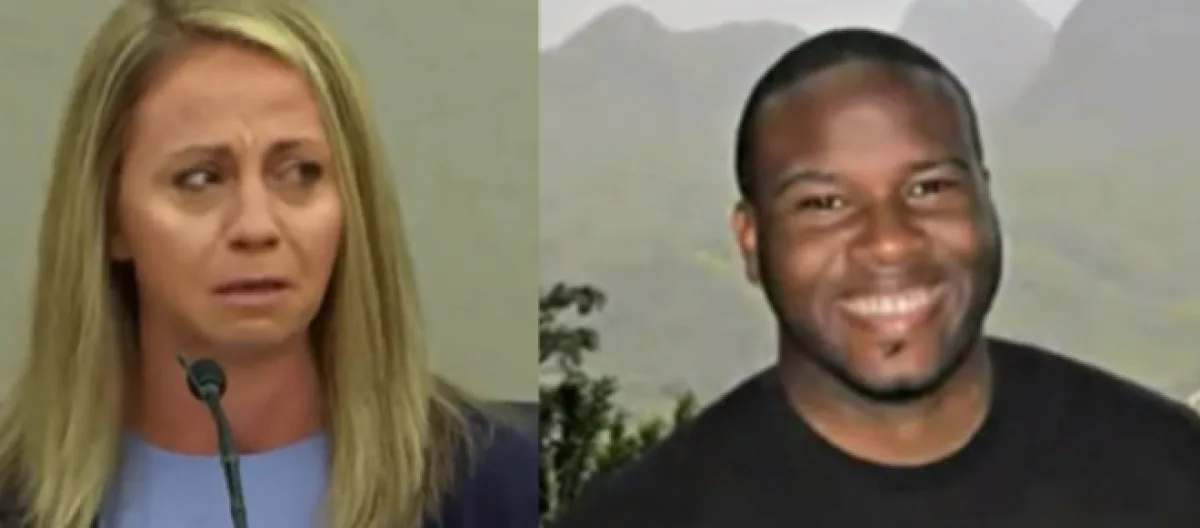Amber Guyger's ever-changing story didn't fool jurors in this high-profile case. Evidence and medical examination of Botham Jean's body spoke in contrast to her 2018 recounting. Although Amber Guyger said Botham charged at her, New York Times reported that ballistics tests revealed he was either sitting on his couch at the time of the shooting, or he was in a lower, "cowering position."
The New York Times called the case one of "race, policing, and mistaken identity." Amber Guyger repeatedly stated that she thought she was in her apartment, and that Botham Jean was an intruder.
According to her testimony, she gave verbal warnings and commands. But her neighbors mentioned that they didn't hear any verbal commands on that night. Only Jean sounding confused — and then gunfire.
Jurors saw through Amber Guyger's defense
The jury consisted of seven African-Americans, four whites, and five of other ethnicities. Altogether, there were 12 jurors and four alternates.
Jason Hermus was the prosecutor. He informed jurors, "Justice needs to happen in this courtroom today." He noted that Botham Jean wasn't a threat to Amber Guyger at any time during their encounter. Likewise, another prosecutor — Jason Fine — told jurors that they were the "voice of the community." He insisted that they hold Amber Guyger accountable for her actions.
Specifically, Fine said that her actions just weren't acceptable in Texas — or any state. "Your home is supposed to be your sanctuary, where you feel safe," Jason Fine urged.
CNN mentioned that jurors deliberated for less than 24 hours. After asking for clarification regarding the definition of "manslaughter" and the "castle doctrine," they were ready. The castle doctrine says that you have a right to use lethal force to defend your home. This works on the premise that "your home is your castle." Interestingly enough, had jurors fell for this notion concerning Amber Guyger, she could've gotten away with murdering Botham Jean — since she "thought" she was in her home and was "defending" it.
Underrepresentation and past verdicts
But after deliberation, the jury returned, and the judge read a guilty verdict. The New York Times reported that Botham Jean's sister cried. "Sobbed," was the word used. Too, Jean's mother lifted her hands to the air and proclaimed, "God is good." Amber Guyger faces between five to 99 years in prison for her crime. Outside the courtroom, you could hear chants of "Black Lives Matter."
S. Lee Merritt represented Botham's family, and he said this was "the most diverse jury" he's ever seen. The New York Times mentioned Merritt also noting how hard Dallas County residents worked to create a fair environment for this case. He also was attorney for Antwon Rose II.
This was an unarmed black teen who was gunned down by police in Pittsburgh, Pennsylvania in 2018. The officer was white, and the jury was majority white.
He was acquitted of charges — just like in the killings of Trayvon Martin, Tamir Rice, Michael Brown, Eric Garner, Philando Castile, and so many others. Fortunately, the officer (Daniel Pantaleo) who killed Eric Garner, with an illegal chokehold in 2014, was just fired from NYPD last month — but a whole five years after the fact. And that's just a firing. Not a conviction. Not even a charge.
There are countless other cases where white officers were blatantly in the wrong and not following protocol, and although all footage was captured and presented, majority-white juries delivered most officers free passes.
Conversely, one — Mohamed Noor, a black officer — didn't receive the same leniency when he "feared for his life" and shot Justine Damond, a white woman.
He was sentenced to 12.5 years in prison, and his actions were deemed "reprehensible."
